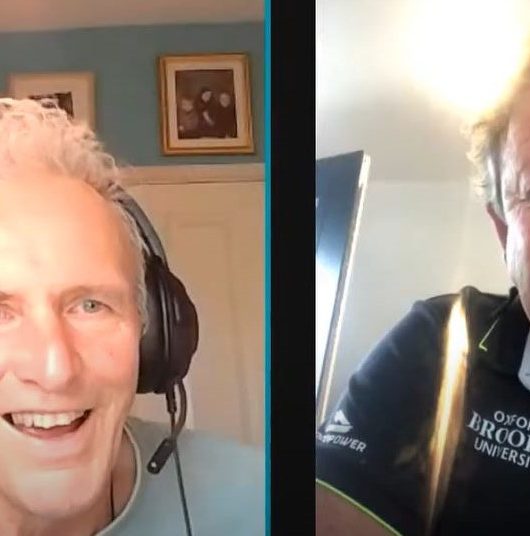Technique versus skill… which is more important? Do you know the difference? Which do you coach, and why?
A exploration of why some crews go faster than others. Some crews who seemingly row with poor technique seem to be very fast, why is that?
What really is the most important thing to focus on to make crews fast…?
Over time, coaching experience is passed on from coach to coach. Young coaches from all over the world learn by listening to experienced coaches, attending coaching conferences, and experimenting with their own training programmes and coaching techniques. Within this process, however, a lot of legacy beliefs and dogmas are passed on, often without much questioning. Such beliefs include when to rock body over on the recovery, or ensuring athlete bodyweight shifts onto the feet at the right point in the recovery, or even the speed of the hands around the back turn.
Now, with the advent of social media channels including YouTube, it is easy to get hold of past video footage of many good crews – or even, today, to watch them all live online. Coaches watching these fast crews can discern what they all have in common – or don’t have in common. These crews do not all row in the same way, that is for sure. There are many styles out there and many seem to be effective.
So why do fast crews go fast? What is the balance between improving rowing technique and skills development?
If you came into the sport of rowing with no previous knowledge of it, and were asked to define what it is that makes a fast crew, where would you start?
Perhaps you would watch some rowing footage, speak to some successful athletes or coaches, read a few books, and possibly read a few scientific publications on the biomechanics and physiology of rowing.
Based on this research, a list you may draw up of the main components of what makes a fast crew might include the following factors:
- Good Athletes
- Correct equipment
- Appropriate training programme
- Effective performance monitoring and analysis
- Correct biomechanics
- Robust psychology.
Although it has always been there in the sport of rowing as a physical factor in making a crew go fast, biomechanics is today an increasingly well-understood factor in helping explain what is actually going on inside a fast boat. Biomechanics helps find the answers to questions such as:
- How long a stroke should you row?
- How much slide should you use?
- How much body should you use?
- How fast should you travel on the recovery?
- What is the correct hand speed at each point in the stroke?
- How can lots of rowing at 18-20 help you race at 36?
- Is the entry the last part of the recovery or the first part of the drive?
- What is the ‘perfect’ force curve?
- How far should you lean back at the finish, and why?
Set again the context of whether such questions are relevant or useful, a few observations can be made that summarize what is going on in the boat, based on telemetry data collected on crews of all standards?
First, the boat speed ebbs and flows during the stroke. The minimum speed is found just after the entry of the blade into the water. The maximum speed is found at different places in the recovery, depending on the rating: at lower rates, the maximum speed is found not long after the blade is extracted from the water; at higher rates, it is found when the athlete is at about three-quarter length slide.
Second, as the stroke rate increases the stroke length also increases until about 24 in rating – but thereafter it decreases. This is the case for both elite rowers and average club rowers: the fastest rowers just happen to be able to maintain longer strokes at all rates (even if stroke length is decreasing, overall). In terms of the point in the drive or recovery that stroke length decreases as rate increases, in a sculling boat the stroke shortens at the finish, and in a sweep boat it shortens at the catch.
Third, applying pressure to the footplate when the blade is not in the water slows the boat down. In addition, the later the athlete applies pressure to the footplate during the recovery, the faster the boat will be travelling when the blade enters in the water (plus the boat will also have travelled further). The more direct, quick, and aggressively the athlete is in applying pressure to the footplate at the beginning of the stroke, the sooner the athlete will connect body mass to the hull of the boat in the drive phase: the sooner body mass is connected to the hull, the sooner the hull will accelerate.
In essence, you push the footplate to accelerate the athlete, and pull the handle to accelerate the hull.
Fast hands away has no effect on boat speed, but a fast rock-over of the body creates significant – and detrimental – downward pressure on the hull.As the blade enters the water at the catch, the best athletes apply a great deal of pressure on the foot stretcher. Initially this has a large, detrimental effect on the acceleration of the hull: the more pressure an athlete applies, the greater the negative effect on the acceleration of the hull; but it also means the hull accelerates sooner and with a greater positive effect.
When an athlete does apply force on the stretcher at the catch, the greater the stretcher force applied at the beginning of the stroke the better. This will reduce the time it takes for the athlete’s body mass to ‘catch up’ with the boat. The sooner the mass catches up with the boat, the sooner it will add to acceleration of the boat.
Fourth, to more effectively use the body’s major muscle groups, the heal should press on the foot stretcher before the back angle opens.
Fifth, if the handle force is greater than the stretcher force, the boat is not accelerating. The handle only accelerates for the first two-thirds of the drive, and it decelerates into the body at the finish. The blade begins exiting the water as the handle reaches the finish.
Finally, maximum seat speed occurs at three-quarter slide on the recovery. At high rates this coincides with maximum boat speed, but this is not the case at lower rates.
The next question is how to go about coaching all of that? Does a coach focus on the visual side of things, or on the skill of making the boat go fast? Suddenly the position of the little finger on the outside hand seems less important.
View more content like this

Richard Spratley, The Mastermind behind the Oxford Brookes Rowing Empire, chats in Crossy's Corner
Richard Spratley from Oxford Brookes University Boat Club gave us a great interview. Him and Martin discussed some interesting topics, including what it’s like working
Ludum Coaching App Can Help Manage Your Club
Running and organising a rowing club is a complex movable feast that seems to require the use of many platforms and technologies in order to
Crossy's Corner with Tony O'Connor, Rowing Coach of the New Zealand M8+
Running and organising a rowing club is a complex movable feast that seems to require the use of many platforms and technologies in order to



